Uncanny X-Men, Part 21: Epic Magneto Triumph and More X-Men Death!
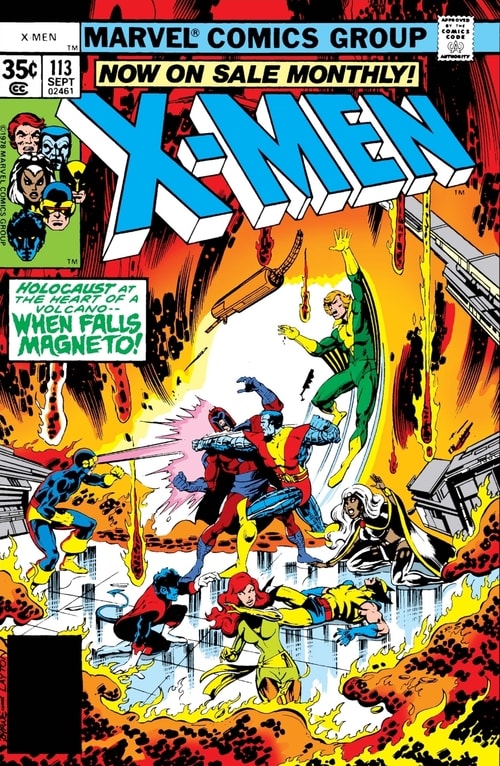
I started collecting comics in 1981. I was lucky that a friend had been collecting for a while and didn’t care much for X-Men. I ended up trading comics with him and ending up with X-Men, which was my favourite. Because of that, for the longest time, the earliest X-Men issues I had were #112, #116 and #118. Occasional trips to the comic shops in Toronto and my many visits to my town’s lone second-hand book store helped me fill in many gaps, although it wasn’t until the 1986 reprint series Classic X-Men that I got to read issue #111.
That experience of just trying to collect all the stories of your favourite characters seems alien to my son, who has trade and omnibus editions, can read digitally for a pittance and so on. My reading experience growing up was not knowing what was in the missing issues which felt like standing on an island and looking across the way to another island I couldn’t reach, but could imagine.
Welcome to my 21st post in my ongoing blog series of my reread of the X-Men starting in 1963. We’ve reached 1978, just three years before I started collecting, and we’re into issues now that form part of my biographical comics playlist. These were among the stories that shaped the outline of my creativity. The art and story and emotion still leave me in a bit of awe.
So put on your bell bottoms, check your medallions and pull up a chair to 1978. If you need help getting into the mood, the radio was playing Baker Street by Gerry Rafferty, September by Earth, Wind and Fire, Just What I Needed by The Cars and Abba asked us to Take a Chance on Me.
We begin X-Men #111 following original X-man Hank McCoy, now the Avenger Beast. He’s been tracking the X-Men because when he went to the Westchester mansion, they were missing. He now tracks them to a circus where Byrne and Austin treat us to this spectacular double-splash page:
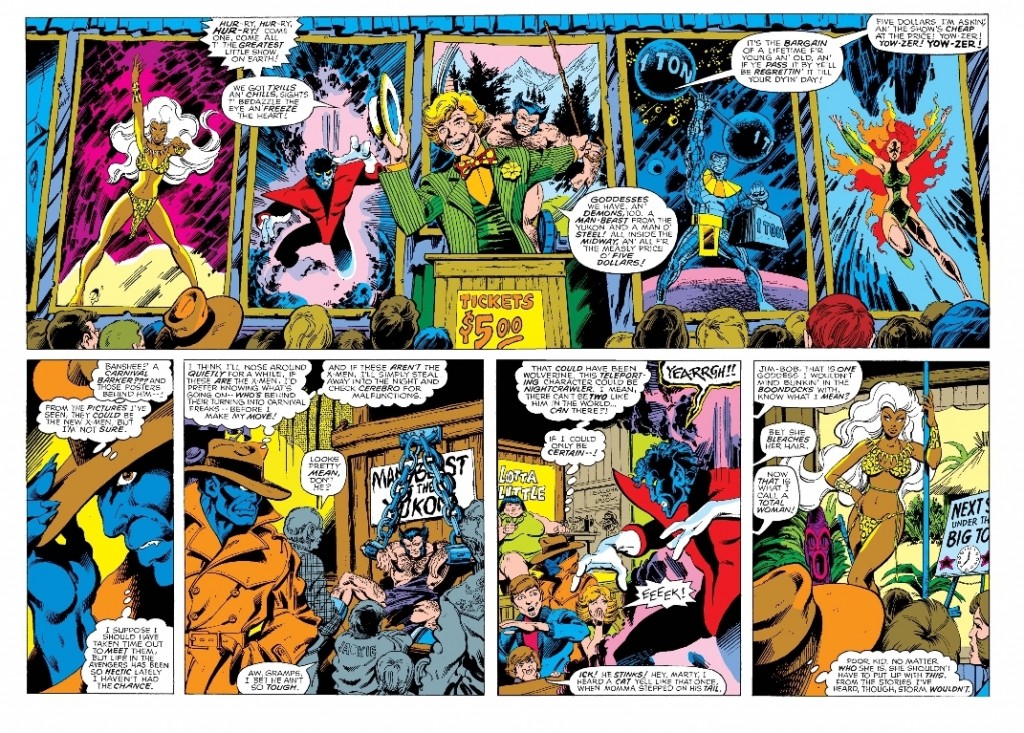
Issue #111 is about Beast’s investigation, trying to see if these really are the X-Men because he’s never met the new ones and Jean and Scott don’t look or act like Jean or Scott. His investigation eventually leads him into trouble, and Mesmero, whom we haven’t see since the Steranko period.
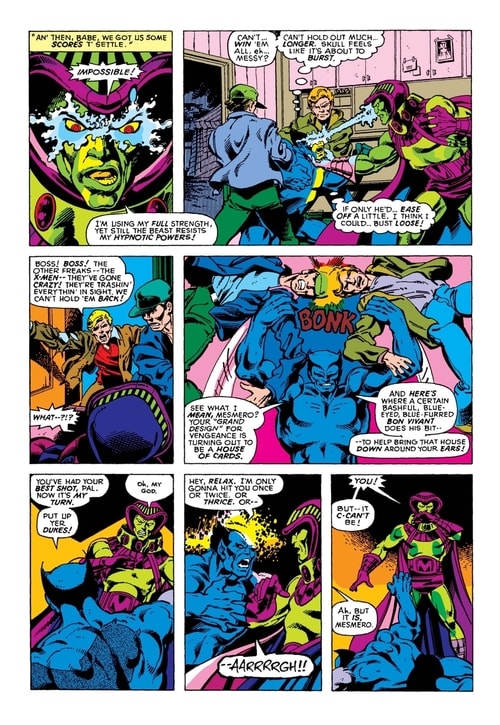
But that’s not all! Hank isn’t the only one who’s been tracking the X-Men. Check out the Magneto below and tell me that Byrne/Austin doesn’t do a great villain!
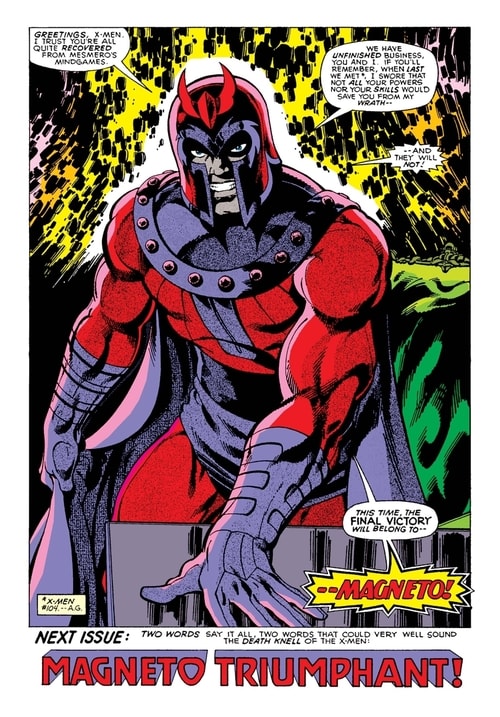
I’m going to pull one of those comic-style editorial asides now to point out that Magneto has been busy since we last saw him in X-Men #104. He appeared in full cartoonish villainy in Champions #16, working with Beast to try to defeat Doctor Doom. I would normally cover an appearance of Magneto, Beast, Angel and Iceman, but the Mantlo/Hall/Esposito Champions felt phoned in and cliché.
Magneto also appeared in Captain America Annual #4, written and drawn and edited by the great Jack Kirby. However, 1977 was after Kirby’s 5-year contract at DC (Mister Miracle, Forever People, The Demon, etc.) and during his brief return to the company he’d basically co-created. In this era, Kirby was making some interesting contributions to the field with Machine Man, Moon Boy and Devil Dinosaur, 2001: A Space Odyssey and The Eternals (the last being a series I loved and collected in its entirety during 1981-1983), but his work on the Cap annual seemed confused and rushed. In it, the X-Men’s greatest villain possessed none of the gravitas or vision that makes him compelling and elevates the story. So I won’t cover those here, but if you’re a completist looking for lower quality Bronze Age Magneto, check them out!
X-Men #112 is one of my favourite issues from a series that has many favourites. It’s also a step on the path to X-Men’s business success. You’ll recall that X-Men has been a bimonthy title since issue #1. In issue #112, Marvel management is finally seeing something special and is moving them to the front burner, to twelve issues a year.
The issue opens with the X-Men confronting Magneto in a circus wagon. Magneto is totally chill, while Cyclops, the only one other than Jean who knows how dangerous this is, tries to hold the X-Men back. Claremont, Byrne and Austin make of Magneto a terrifying figure.
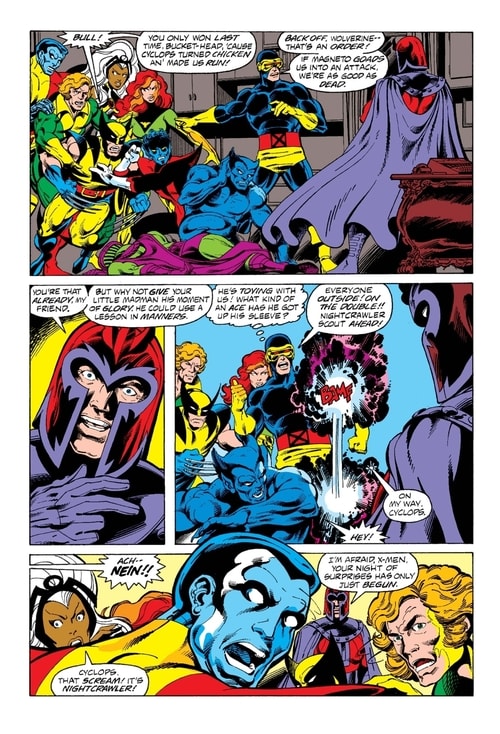
Little do the X-Men know that, as they are deciding whether to fight or retreat, Magneto has lifted them into the sky and is hurtling them south at jet speed. Nightcrawler finds out the hard way. And when they find out this really inconvenient truth, the X-Men can’t do anything; if they take out Magneto, they’ll all drop to their deaths.
They end up splashing into a live volcano in Antarctica and then into the vast hidden base beneath. There, Magneto attacks. Check out the double-splash page!
These new X-Men haven’t been trained to fight Magneto and still don’t work as a team, so things go badly, even with Phoenix. It’s worth making an aside about Phoenix, because she’s the spine of the story from #98 to #137. She’s a Silver Surfer-level and Thor-level power and her assault on Magneto is very cool.
But, Claremont is kind of the dog who caught the car with Phoenix. In creating someone so powerful, he needs to either up-power all her foes, or occasionally weaken her. In the battle with the Imperial Guard in issue #107, he depowered Phoenix, with the excuse that powering a star gate to a distant galaxy exhausted her. In #110 he played the same card by tranquilizing her. In this issue (and also in the Proteus sage (coming up)), she reaches a temporary limit on her growing power. Claremont doesn’t make Kryptonite, but until 1979, Phoenix’ access to her full power is a bit unreliable, which allows Claremont some story flexibility.
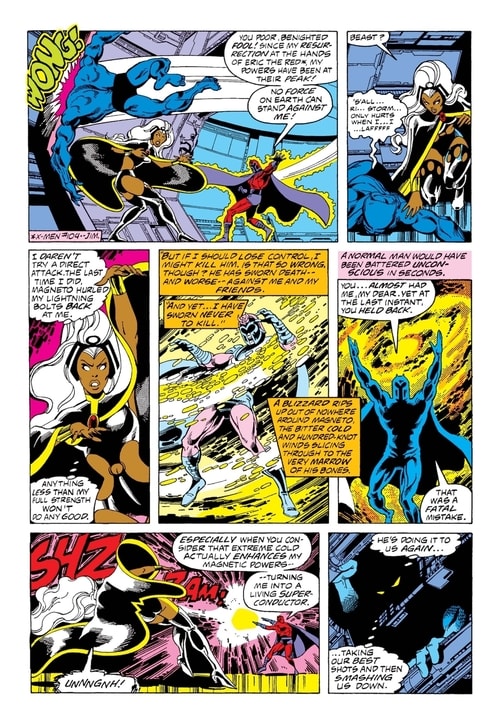
X-Men #113 launches off the defeated X-Men cliffhanger from the previous issue. Magneto has devised a really cruel fate for the X-Men. Since he had been reduced to helpless infancy in Defenders #16, he imprisons the X-Men in chairs that scrambled not just their powers, but their hand-eye coordination and all dexterity. Essentially, they have the control of their bodies that they might have had at 6 months old. And they’re cared for by a condescending nanny. It sucks.
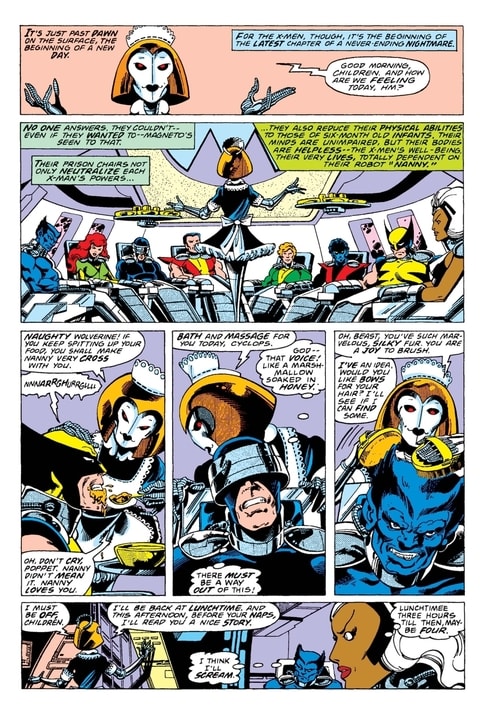
I’m not going to say how they get out, but it cleverly links back to some character backstory that Claremont and Cockrum laid down a year earlier in X-Men #102. Their break-out brings back Magneto who had been in the process of rebuilding Asteroid M (last seen in the Lee-Kirby run!). Cyclops has gotten the X-Men to work as a team, barely (I’m looking at you, Colossus, you showboat!) and they do some serious damage. The problem is that Phoenix is a little too savage and gleeful about striking back at their former captor and she smashes the systems holding back a volcano’s worth of lava.
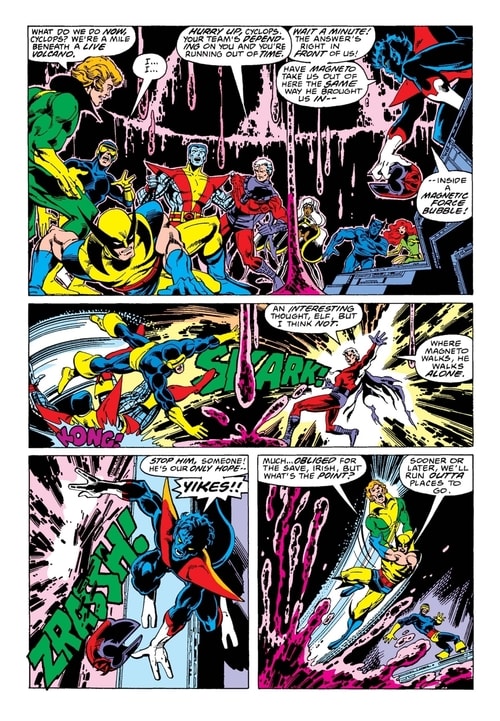
As the lava falls around them, Beast saves Phoenix, but they’re separated from the rest of the X-Men and the volcano swallows everything. Magneto gets away, and after he sadly views the wreckage of his base which contained irreplaceable work, he realizes his plans have been set back years. Gravely wounded, but still victorious, he leaves to convalesce at Asteroid M. It’s poignant and awesome. This is Magneto as a villain at his finest.
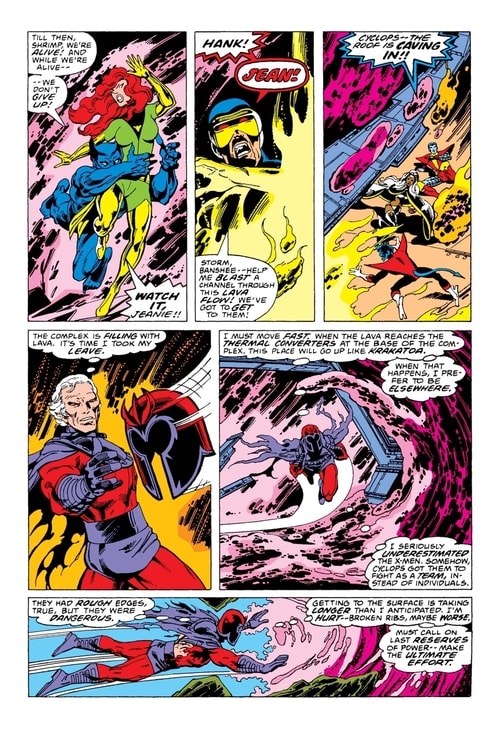
After he is gone, the Phoenix bird appears, bursting out of the volcano, carrying Jean and Beast. They’re the only ones who survived. Phoenix freaks out, until Hank, one of her oldest friends, talks her down, and makes her realize that no one could have survived the collapse of a volcano. More poigant! So many feels! Claremont and Byrne are hurting my heart!
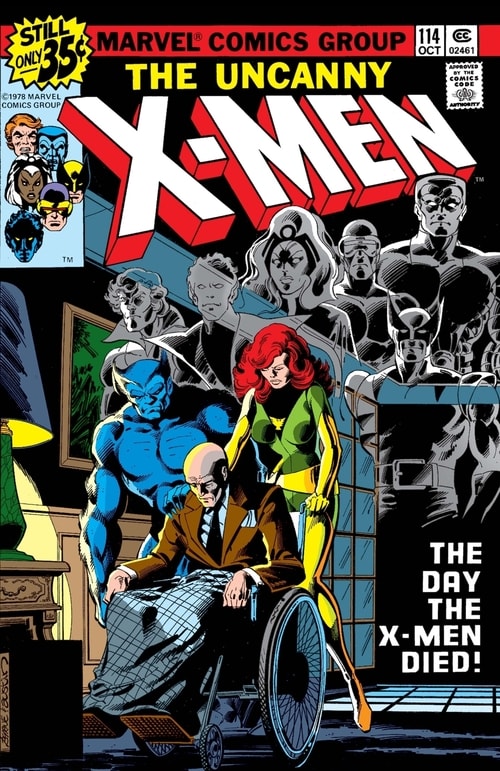
The heart stings keep on hitting in the opening pages of X-Men #114. The scene opens with Jean and Hank arriving at the X-mansion. They are sad and they have sad news to bring. Lilandra is there and asks what’s wrong. Beast takes her for a walk to tell her. Jean is the one who has to break the news to the teacher who loves them. It’s a nearly silent scene, overcome with grief.
“Professor,” she says. And then “Charles.”
There’s so much subtext. This is the first time she’s called him by his first name. She’s grown up. She’s graduated to equal and she has to deliver the most terrible news to a parent figure. Claremont, Byrne and Austin did this so well. Bravo and fade out.
But…time passes and cue to:
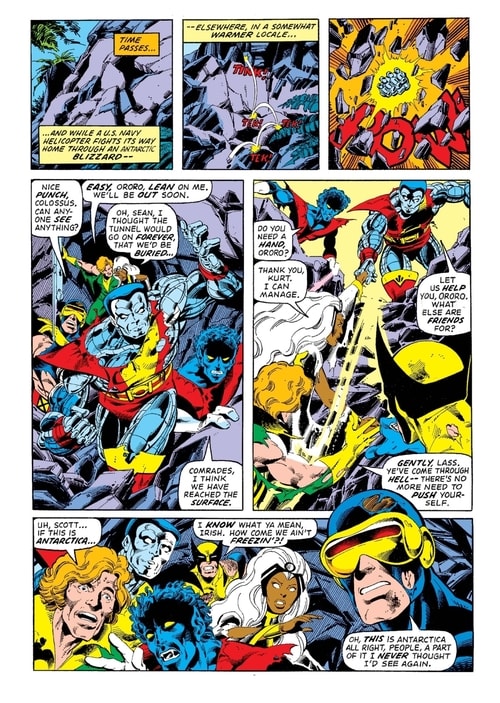
The remaining six X-Men have been tunneling for long days under ground with a claustrophobic Ororo. They’d escaped the volcano by Storm solidifying some of the lava with a blizzard long enough for Cyclops and Banshee to cut a channel into rock. When they emerge from their subterranean hell, they’re surprised to find they’re not freezing. All surprised, that is, except Scott, who realizes they’re in the Savage Land (last seen drawn by Neal Adams in X-Men #63).
Banshee and Storm get into trouble as they fly into the air and it’s another superb issue of action and character mixed together, each character revealing their strengths and weaknesses in how they react to the Savage Land. The X-Men eventually find a bit of help; a village takes them in and they can rest. And grieve. All except for Scott who has trouble grieving for Jean. The changes from Jean to Phoenix that he worried about in issues #105 and #108 and #109 are still there, and those fears of the savage streak growing in Jean are holding him from connecting to his grief.
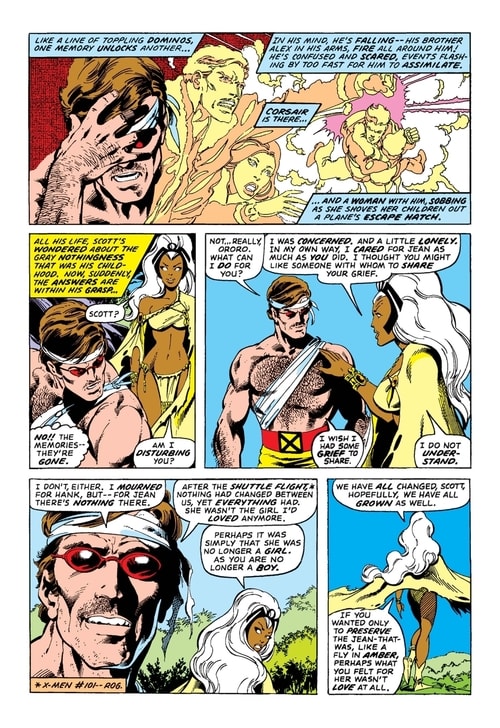
Ororo rips him on it and I feel bad for the both of them. But again, this is solid Claremont, putting his characters through the emotional ringer, and something that sets X-Men even further apart from any other book on the stands. Part of me wants to emphasize how good this short run is, but honestly, Uncanny X-Men from #97 to either #150 (or #175 depending on how you like the Paul Smith-as-an-artist run) represents an astonishing high-water mark for comics of the Bronze Age. Other comics have spots or even big spots of emotion, but the X-Men is a family saga that hits those high points more consistently than anything I’ve seen from that era.
Issue #114 ends with a great cliffhanger, but I won’t show it to you yet, so tune in in two weeks!
If you want to catch up on any of my other posts about the X-Men, they’re below:
- Part I: Introducing The Strangest Super-Team of All: Uncanny X-Men #1 (Nov 1963) to #20 (May 1966)
- Part II: Early Guest Appearances (1964-65), Uncanny X-Men #21-23 (1966), and X-Men: First Class Volume I (2006)
- Part III: X-Men: First Class, Volume II (2007) and First Class Finals
- Part IV: Uncanny X-Men #24-39: The Middle Years of the Original Team
- Part V: Uncanny X-Men #40-48: Death and Separation
- Part VI: Uncanny X-Men #49-53: Reunion and Family and Steranko
- Part VII: Uncanny X-Men #54-58 — Havok and Neal Adams
- Part VIII: Uncanny X-Men #59-66: The Savage Land and the End of the Silver Age X-Men
- Part IX: Filling in the Corners of the Original X-Men with Savage Hulk #1-4
- Part X: John Byrne’s The Hidden Years #1-4
- Part XI: Storm, the FF and Phoenix in John Byrne’s The Hidden Years
- Part XII: X-Men Guest Appearances in 1971-1972 and Hank gets Furry!
- Part XIII: Englehart’s Bronze Age Monster Horror – The Beast
- Part XIV: 1973 and 1974 – Magneto, the Hulk, Banshee and post-Watergate Captain America
- Part XV: 1974 and 1975 – The Last Tales of the Original X-Men
- Part XVI: Enter Wein, Claremont and Cockrum in 1975
- Part XVII: 1976 — Sentinels in Space and the Rise of Phoenix
- Part XVIII: Juggernaut and Magneto — For the Very First Time
- Part XIX: Phoenix, Firelord and the Imperial Guard
- Part XX: Iron Fist, Blame Canada and Some Strike-Outs
- Part XXI: Epic Magneto Triumph and more X-Men Death!
- Part XXII: 1978 — The Savage Land, Japan and Psionic Throwback Thursday!
- Part XXIII: 1979 — Chaos in Canada with Alpha Flight!
- Part XXIV: Arcade, Murderworld and their First King-Sized Annual
Derek Künsken writes science fiction in Gatineau, Québec. His first novel, The Quantum Magician, a space opera heist, was a finalist for the Locus, Aurora and Chinese Nebula awards. Its sequel, The Quantum Garden was an Aurora finalist as well. His third novel, The House of Styx, got a starred review in Publishers’ Weekly and the Library Journal and is out in audio and ebook (order link); and the hardcover will release in April, 2021.
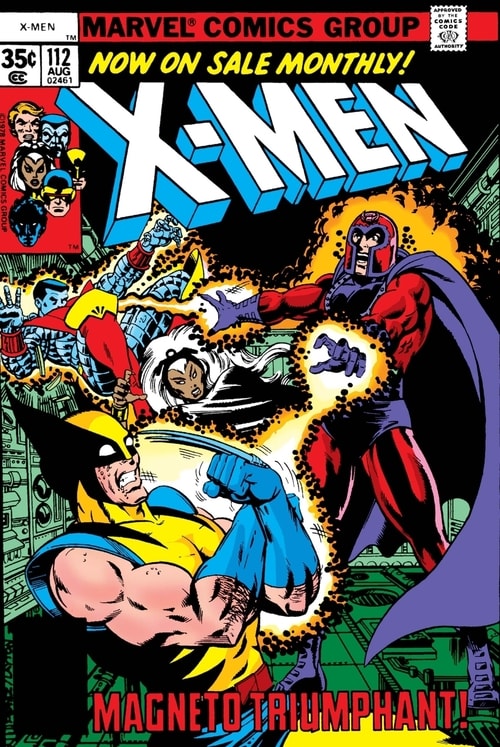
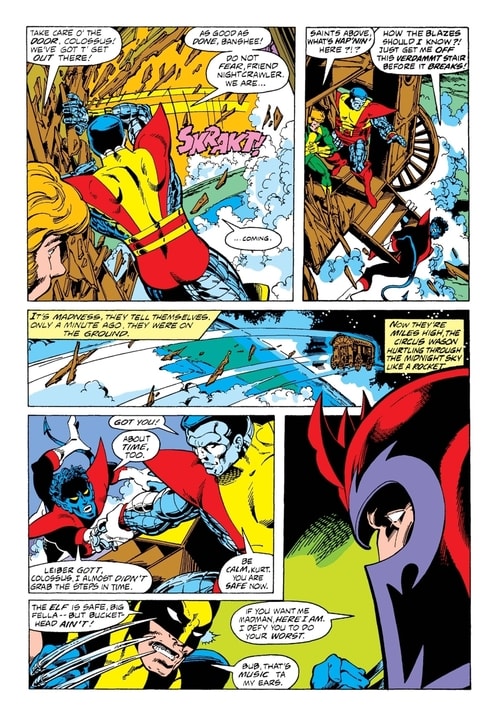
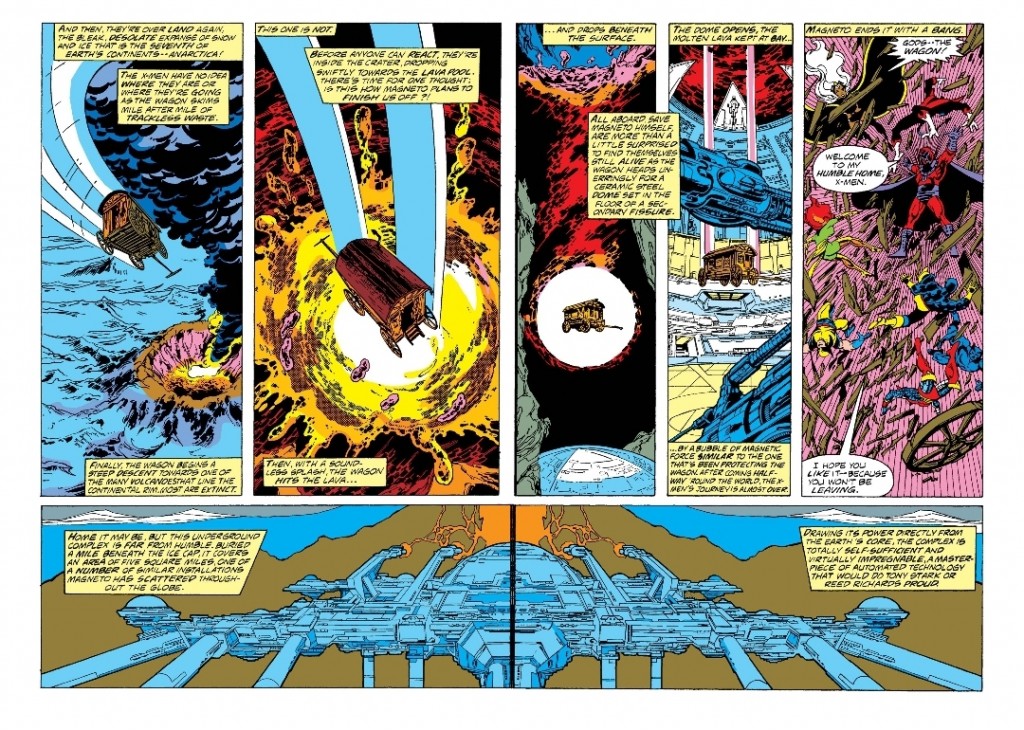
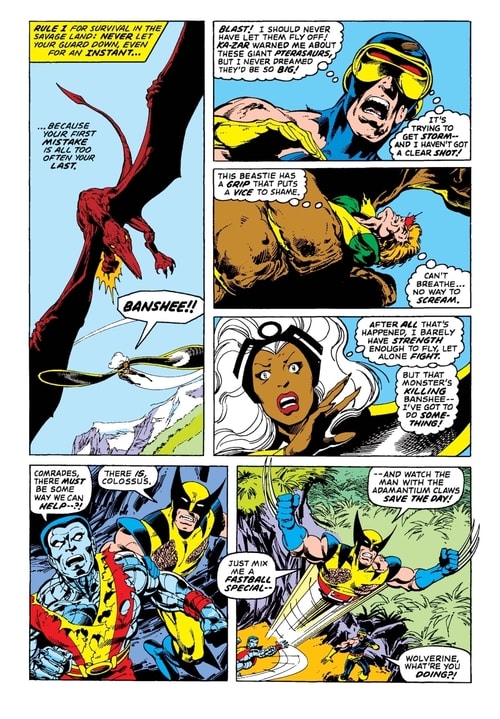
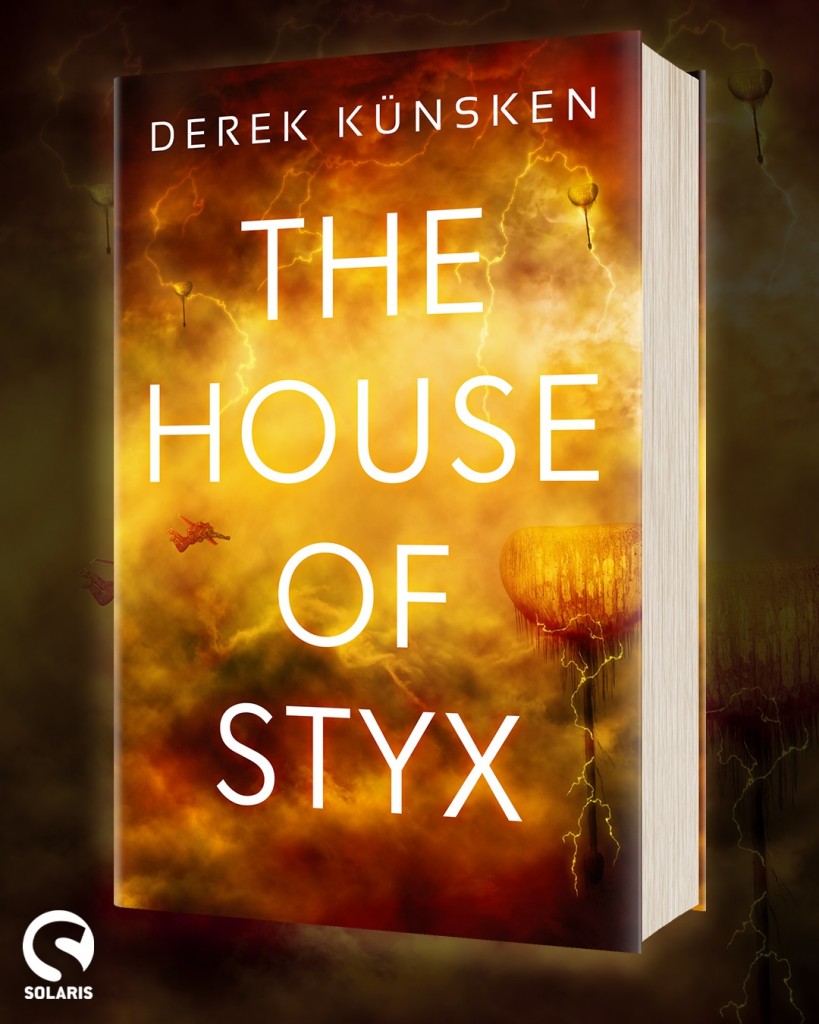
For me #112 is where the series really takes off in to something better than any other bronze age book (that i’ve read so far.)
This is the first time Magneto feels like an honest threat. Byrne’s art for the Savage Land is great. He’s panel design has such a smooth flow to it that you almost forget you’re reading a comic.